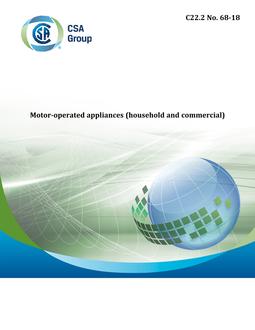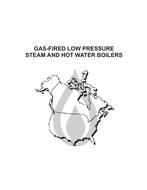Click here to purchase
Scope Part I
1.1 Except as provided for in Clause 1.2, this Standard applies to all boilers, pressure vessels, fittings, and piping, as provided for by the Act and defined in this Standard. Notes: (1) In certain provinces there may be variations in size limitations quoted in this Standard. Consultation with the regulatory authority is recommended. (2) Cylinders, spheres, tubes, and drums used in transportation are subject to the Transportation of Dangerous Goods Act and Regulations under that Act; it is not intended that the provisions of this Standard conflict with or supersede the requiremen ts of that Act or Regulations in regard to the control of these containers when used for transportation by any mode. (3) Corresponding imperial values to the SI (metric) units are shown in parentheses for information only. Where nominal pipe sizes are shown they have been retained in nondimensional terms. (4) All pressures shown in the text are gauge pressures, ie, above atmospheric pressure. ,,
1.2 Requirements for compressed natural gas refuelling station pressure piping systems and containers are covered in CSA Standard B51-95, Parts 2 and 3.
1.3 This Standard does not apply to pressure-retaining components as used in hydraulic elevators.
1.4 Where any Clause of this Standard is at variance with the referenced Codes and Standards, the requirements of this Standard govern. Part II
1.1 This Standard sets out minimum requirements for serially produced light-weight refillable gas cylinders, original eq uipment and conversions, having a water capacity exceeding 20 L (1220 in?) but not exceeding 1000 L (35.3 ft?). The cylinders are intended only for the onboard storage of high-pressure compressed natural gas as a fuel for automotive vehicles to which the cylinders are to be fixed. Cylinders may be of any steel, aluminum, or nonmetallic material, design, or method of manufacture suitable for the specified service conditions. ,,
1.2 Cylinders covered by this Standard are designated as follows: (a) CNG-1 – Metal; (b) CNG-2 – Metal liner reinforced with resin-impregnated cont inuous filament (hoop-wrapped); (c) CNG-3 – Metal liner reinforced with resin-impregnated continuous filament (fully wrapped); and (d) CNG-4 – Nonmetallic liner with resin-impregnated continuous filament (all-composite). ,,
1.3 Service conditions to which the cylinders will be subjected are detailed in Clause 4. This Standard is based upon a working pressure for natural gas as a fuel of 200 bar (2900 psi) settled at 15?C (59?F), with a maximum filling pressure of 260 bar (3770 psi). Other working pressures can be accommodated by adjusting the pressure by the appropriate factor (ratio). For example, a 250 bar working pressure system will require pressures to be multiplied by 1.25. The service life of the cylinder is to be defined by the manufacturer and may vary with applications. Definition of service life is based upon filling the cylinders 1000 times a year. The maximum service life of types CNG-2, CNG-3, and CNG-4 cylinders shall be 20 years. For all cylinders a “”safe life”” design principle is used. For metal and metal-lined cylinders, the cylinder life is based upon t he rate of fatigue crack growth. The ultrasonic inspection, or equivalent, of each cylinder or liner is required to ensure the absence of flaws that exceed the maximum allowable size determined by fracture mechanics. This approach permits the optimized design and manufacture of light-weight cylinders for natural gas vehicle service. For all-composite cylinders with nonmetallic non-load-bearing liners, the “”safe life”” is ensured by appropriate design methods, design qualification testing, and manufacturing controls.
1.4 This Standard does not cover the use of stainless steel or welded m etallic cylinders or liners. Part III
1.1 CSA Standard B51-97, Part 3, contains mandatory requirements for compressed natural gas (CNG) refuelling station pressure piping systems and ground storage vessels.
1.2 Pressure piping systems covered in this Part are those systems (a) between the termination of the utility’s piping, usually at the meter, and the inlet to the compressor assembly at a CNG refuelling station, if the design pressure exceeds 414 kPa (60 psi); and (b) from the inlet to the compressor assembly through to the dispenser nozzle, except for the mechanical parts of the compressor and any subsystems designed for 414 kPa (60 psi) or less.
1.3 Ground storage vessels covered in this Part are pressure vessels installed at CNG refuelling stations and intended to store CNG at pressure for delivery to vehicle fuel tanks.
Product Details
- Published:
- 09/01/1997
- Number of Pages:
- 140
- File Size:
- 1 file , 1.5 MB


